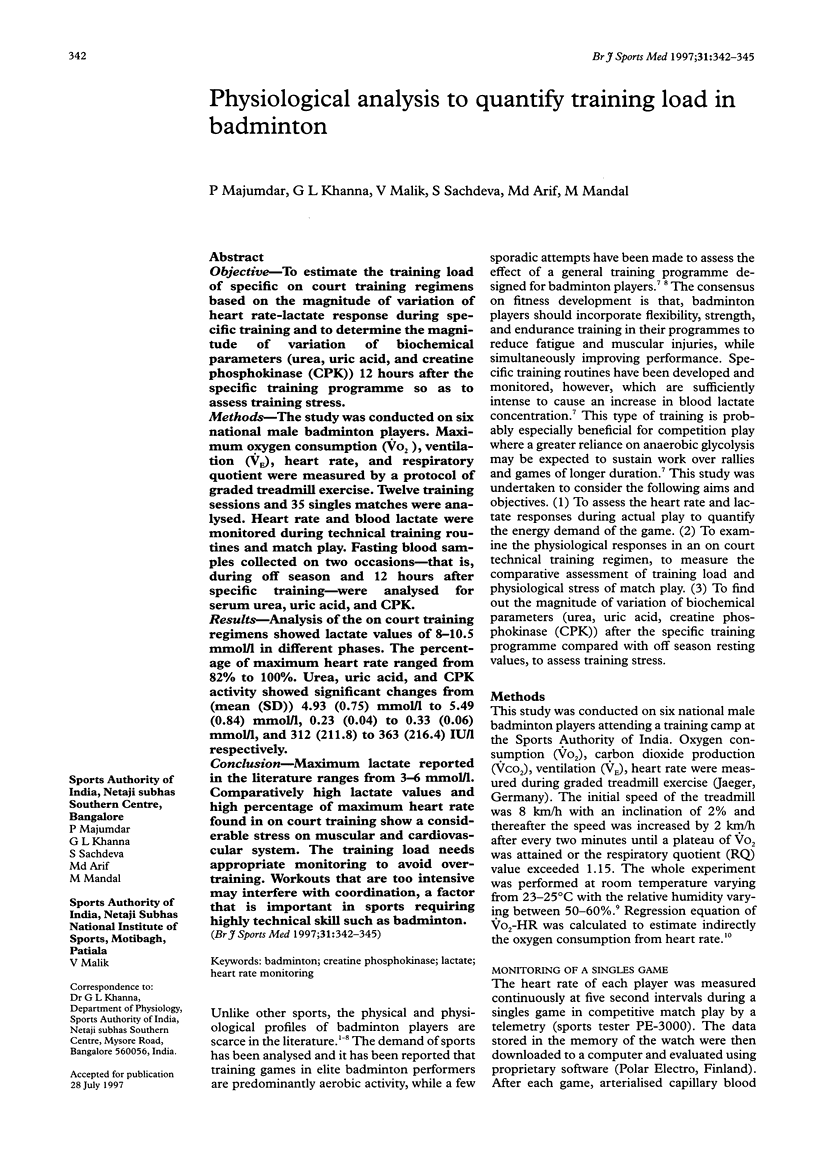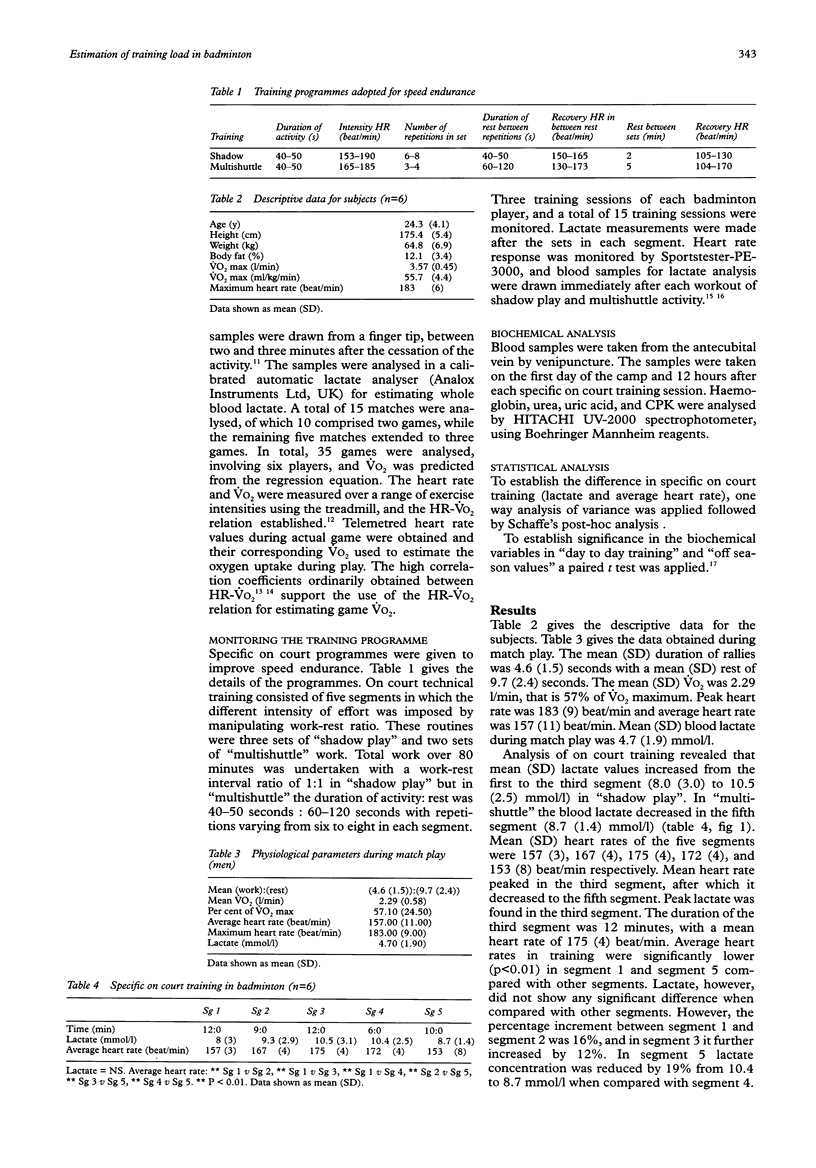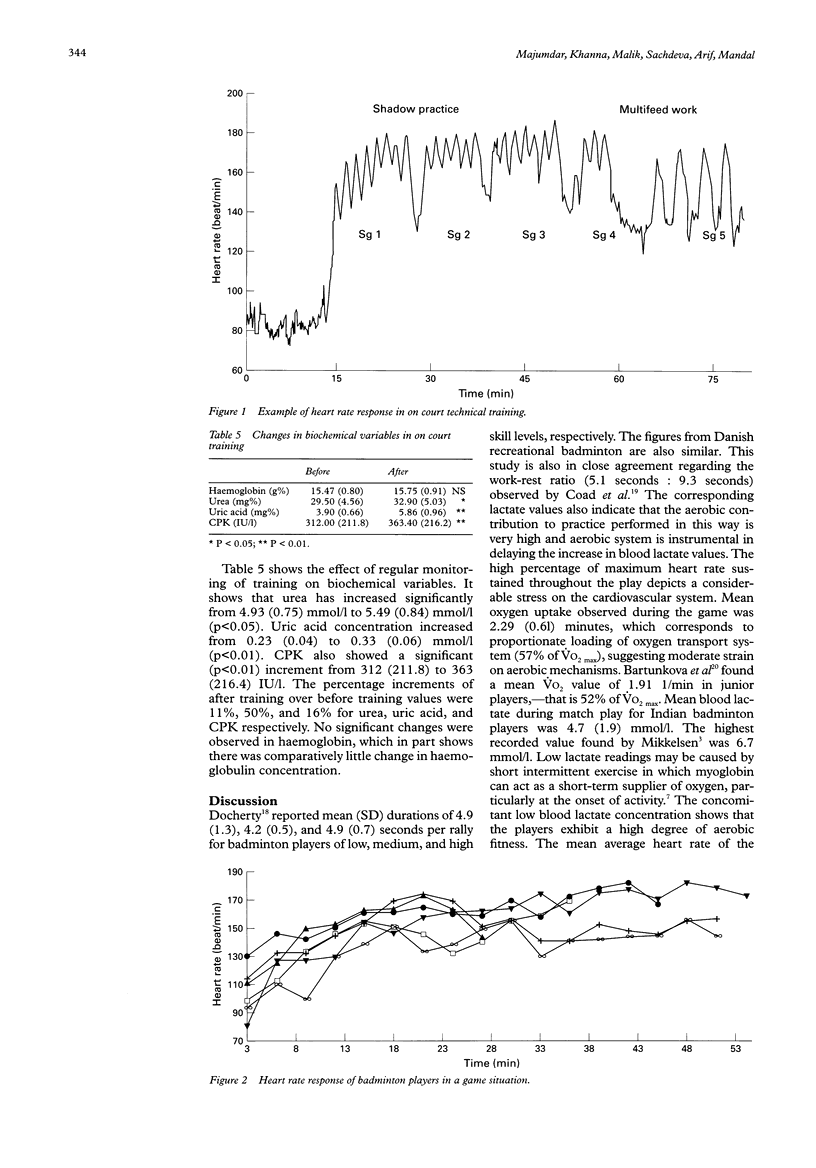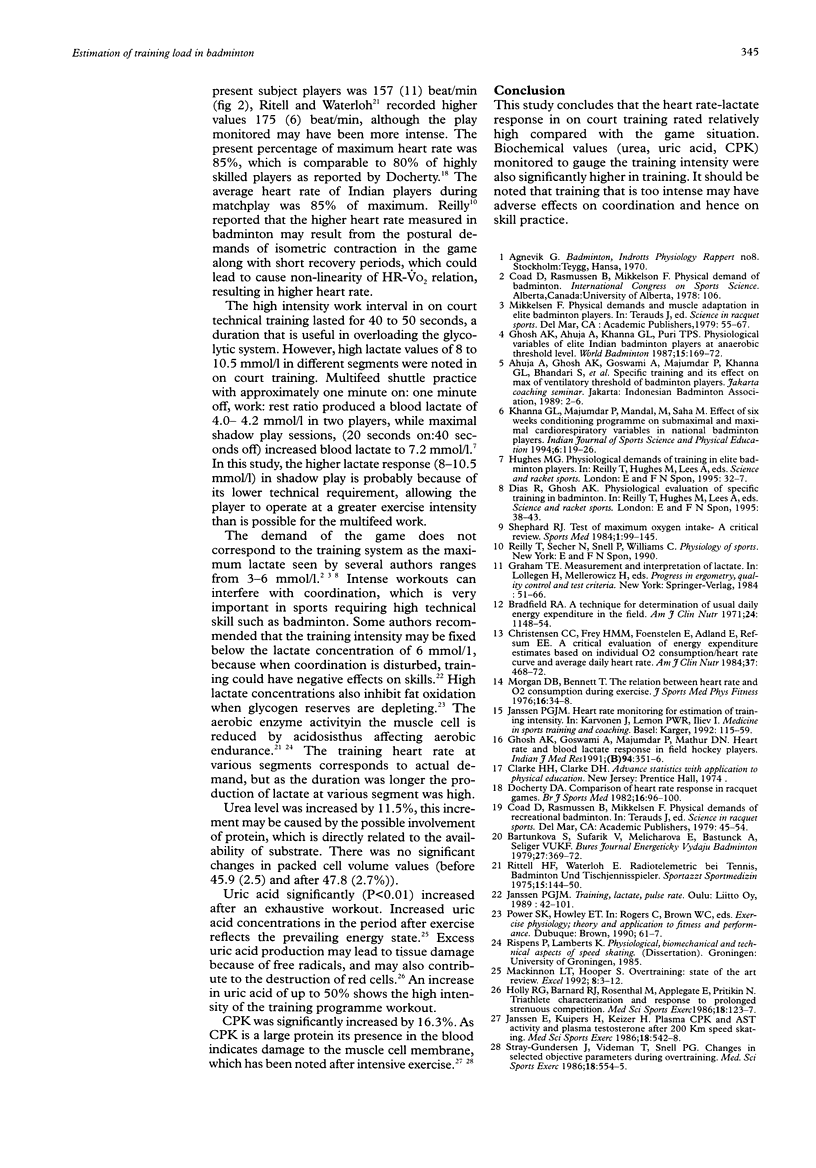Abstract
OBJECTIVE: To estimate the training load of specific on court training regimens based on the magnitude of variation of heart rate-lactate response during specific training and to determine the magnitude of variation of biochemical parameters (urea, uric acid, and creatine phosphokinase (CPK)) 12 hours after the specific training programme so as to assess training stress. METHODS: The study was conducted on six national male badminton players. Maximum oxygen consumption (VO2), ventilation (VE), heart rate, and respiratory quotient were measured by a protocol of graded treadmill exercise. Twelve training sessions and 35 singles matches were analysed. Heart rate and blood lactate were monitored during technical training routines and match play. Fasting blood samples collected on two occasions--that is, during off season and 12 hours after specific training--were analysed for serum urea, uric acid, and CPK. RESULTS: Analysis of the on court training regimens showed lactate values of 8-10.5 mmol/l in different phases. The percentage of maximum heart rate ranged from 82% to 100%. Urea, uric acid, and CPK activity showed significant changes from (mean (SD)) 4.93 (0.75) mmol/l to 5.49 (0.84) mmol/l, 0.23 (0.04) to 0.33 (0.06) mmol/l, and 312 (211.8) to 363 (216.4) IU/l respectively. CONCLUSION: Maximum lactate reported in the literature ranges from 3-6 mmol/l. Comparatively high lactate values and high percentage of maximum heart rate found in on court training show a considerable stress on muscular and cardiovascular system. The training load needs appropriate monitoring to avoid over-training. Workouts that are too intensive may interfere with coordination, a factor that is important in sports requiring highly technical skill such as badminton.
Full text
PDF



Selected References
These references are in PubMed. This may not be the complete list of references from this article.
- Bradfield R. B. A technique for determination of usual daily energy expenditure in the field. Am J Clin Nutr. 1971 Sep;24(9):1148–1154. doi: 10.1093/ajcn/24.9.1148. [DOI] [PubMed] [Google Scholar]
- Ghosh A. K., Goswami A., Mazumdar P., Mathur D. N. Heart rate & blood lactate response in field hockey players. Indian J Med Res. 1991 Oct;94:351–356. [PubMed] [Google Scholar]
- Holly R. G., Barnard R. J., Rosenthal M., Applegate E., Pritikin N. Triathlete characterization and response to prolonged strenuous competition. Med Sci Sports Exerc. 1986 Feb;18(1):123–127. [PubMed] [Google Scholar]
- Shephard R. J. Tests of maximum oxygen intake. A critical review. Sports Med. 1984 Mar-Apr;1(2):99–124. doi: 10.2165/00007256-198401020-00002. [DOI] [PubMed] [Google Scholar]


